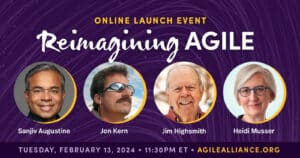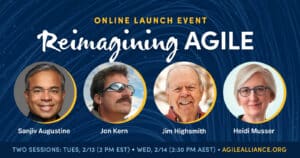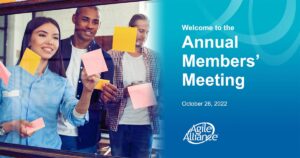Dr. Dave:
Hello, and welcome to the KnolShare with Dr. Dave podcasts. This is Dr. Dave Cornelius, your host. The conversation today is with Ashanti Gardner, a graphic facilitator and recorder, and a coal collaborator in the Agile for Humanity, meetup and conference. So. Hey. Welcome, Ashanti.
Ashanti:
Thank you.
Dr. Dave:
So, we met at the future of work event in 2020, and we had all the stuff going on, kind of hard to keep track of. And I learned about your capability as a graphic recorder. Tell me more about Ashanti. Let me know about you.
Ashanti:
Yeah. So I’m originally from the Midwest and I’ve always had a passion for painting and drawing. It’s always been in me. And yeah, I’m just someone who is very curious. I like to come into spaces with the beginner’s mindset. I love learning new things and I love experimenting. And that’s something I enjoy even more when I do it with other people. So, the whole idea of co-creation collaboration is very near and dear to me. And, for me, this is a journey right now that I’m going on trying to get more into the social innovation impact and change space, because I really, at this moment in time, I really want to help people, be an advocate for people. So, for me, this is truly a shift, and I just feel like it’s the right time. It’s just always been in me, but I probably haven’t been brave enough to step out. And the timing is right, so it’s time for me to step out and do the work I was meant to do.
Dr. Dave:
That is so great to hear. So, I just want to let you know, you’re like the first BIPOC graphic recorder that I’ve met, but I’ve worked in the Agile community. So, tell me more about that journey into the space.
Ashanti:
Yeah. So, there are a few of us out here. But yeah, my journey into graphic recording really started when I was trying to figure out how to take better notes, just for my own self. And I was just struggling. Every time I was writing something down, I would go back to it, and I wasn’t quite sure what I meant to write. I’ didn’t understand the connection between some of what I wrote, and I would have things in different places. And I started searching on YouTube for a solution, because that’s where you go, to YouTube for everything. So, I was like, “Somebody has to have another way of taking notes.” And that’s when I came across visual note taking and I fell in love with it immediately. And I just thought, “This makes sense. It’s genius.” and it really helped me out a lot.
Ashanti:
And I started reflecting back on a time when I actually saw a graphic recorder at a conference, and I’ve always been curious about it, but again, didn’t really ask anybody about it, search for it but I remembered it. And then I just started talking to people and asking people in my network. And eventually, that led me to other people who were doing graphic recording. It led me to Nova Scribes, which is a huge community in the DC area. And now it’s gone really global because of the pandemic. It’s Really opened up space for more people. But it’s a credible community and very welcoming. And yeah, I started there and I’ve met Lisa Nelson, who is a black woman, who has a business in Maryland called See In Colors.
Ashanti:
And when I saw her on the panel, then I was like, “Wow, I’m not the only one.” And it slowly, over time, I went to the international forum of visual practitioners conference. And then I saw more people who looked like me. Not many of us, but I see the potential for that to grow. And I feel like graphic recording, even graphic facilitation is becoming even more popular. It’s been around for decades, but I think it’s really starting to spread and grow in many different spaces. So, we’re out there. It’s just a matter of connecting. And that’s part of what I’m trying to do is, I talked to Christopher Fuller, who is actually, he’s an OG graphic recorder on the West coast and he started long ago when it first was in its beginning state. So, it’s been a good journey. But yeah, you just start meeting more and more people globally in that diversity of thought and just seeing how we’re all so different in the work that we do.
Dr. Dave:
Yeah. I remember the first time I saw it, I’m like, “Oh wow. We have graffiti going on here at our conference today. Dude, what are you doing drawing graffiti?” No, but it was really cool. I was just joking about that.
Ashanti:
It is a little bit like graffiti, which I like. You get to draw on a wall. [crosstalk 00:06:08]
Dr. Dave:
So when you think of, social justice is front and center in our world currently, it’s everywhere. How are you impacted by what you see, hear and experience?
Ashanti:
It really brings up a lot of like emotions for me and a sense of urgency. And it’s just trying to figure out how do I fit in? How can I fit in? How can I make a difference? So, for me, I’m in a place where I’m trying to figure that out. What is my role? What is it going to look like? And how can I be part of entering and, for lack of a better word, maybe a new system, a new way of being, a new way of living, right? Because it feels very much like something is departing from our society, and something may be emerging, right? It’s like is fighting its way out. It doesn’t want to go, but there’s something underneath, that’s emerging. It’s like, how can you bring this thing that’s emerging to the forefront and help this thing that’s sort of fighting us? How can you allow that to slopped off or go away or erode quietly into the night?
Dr. Dave:
Understood. If we could only just take some magic paint and make it disappear, that’d be awesome, right?
Ashanti:
Yeah, but that’s a little bit too simple. If that was the solution, I would totally have done that.
Dr. Dave:
Well, I know you would. So, I’m making an assumption here. So, is your experience in the Agile community different because you were introduced by BIPOC Agile practitioners?
Ashanti:
Yeah, I don’t know. I assume it has been different. I really wasn’t aware of the Agile space. I was introduced to the space, so it’s been interesting. And it’s such an open community and I love how you guys hold space and the idea that you guys focus on how people show up and coming into a space open to the possibility. So, I think you guys have really, the BIPOC community, specifically in the Agile community, I think you’ve, presented a very human way of just being, while at the same time, trying to figure out how can we solve some of our problems and how can we even talk about those things and how can we shape those things? So, for me, it’s been really humbling to be in the space and see you guys move and how you guys conduct yourselves. It’s also very comforting as well to see that there are people with such good hearts, and people were get intentions trying to do good things in the world.
Dr. Dave:
Yeah, I hope so. I hope we’ve done a good job of creating a pathway and experience for you.
Ashanti:
I’ve shared in a lot of good conversations. Last year’s conference, you guys talked about liberation and I think that’s a much needed conversation. How do we envision that? What do we want as a community? So, bringing those conversations to space and you allow other people to come into it too. You don’t have to be necessarily an agilist, right?
Dr. Dave:
Yeah. We’re wide open. So as a woman of color or a black woman, is the new recognition and empowerment changing your experience?
Ashanti:
The new recognition… yeah, I’m not…
Dr. Dave:
Well, a lot of the dialogue that it’s a lot more open. Well, just look at our election in the United States, right? We have the first black woman, a woman of color as a vice-president, right? New empowerment, for sure. And in many other different roles, you’re beginning to see black women and women of color come to the forefront leading a lot of conversations, or just leading in general. So, for you, is that changing your experience just from observing, maybe even being one of the coal collaborators for Agile For Humanity as well, new experience?
Ashanti:
I think it definitely, it’s empowering to see other black women take these positions, whether they’re leading or where they want to call it positions of power, or just being on the forefront of major changes and critical conversations. It feels good because we have a voice. There’s a voice speaking for you out there or, at least, a representation of you out there. And it just brings in another unique perspective to whatever that table is. If I can’t be at the table, it’s nice to have some other perspective there. And I don’t want to say that, because I think there is a danger in that you can speak on the behalf of a whole group, right?
Ashanti:
Because a whole group is not monolithic. We have varied experiences and voices. But I think just seeing somebody who looks like you, there’s something about that, because it says to you that you could be at that table potentially. And many other voices could be at that table. It just opens up that space to not just one type of person or one type of thinker, but many different ways of thinking, many different ways of seeing and being are now at the table. And I think that’s a good thing.
Dr. Dave:
I think so too. It’s really important. So, let’s think about a few actions that you’re taking personally to improve opportunities for BIPOC individuals in the Agile and graphic recording community.
Ashanti:
Yeah. So, I think that’s something that I need to figure out because I, admittedly, I’m still trying to figure out, how do I bring this to other communities? The idea of visual recording or graphic reporting is probably more often known. So, for me, I’d love to get it down on the community level and introduce this to people that look like me, or just people of color, people who are lower socioeconomic status so they can see this visual because oftentimes, it can looks very intimidating, but it really is not. You could really start at home just for yourself in many different ways. So, I’d love to introduce it in that way. So, for me, it’s still figuring out a pathway to that partnering with people so I can get to that level where I can share back, give back. And so, people have a tool that they can use as well.
Dr. Dave:
That’s excellent. So, if we wanted to look at diversity, equity, inclusion, and belonging, if we wanted to look at a Utopia, what would that look like for you?
Ashanti:
Gosh, I think, for me, it would just be people having the ability to express, be empathetic or show empathy for others. I think, a lot of times that empathy is key because, be able to step into somebody else’s shoes and see their other perspectives, to me, that’s what gets you to the belonging and inclusion. I just feel like you have to have the right type of heart to allow and want people who are different from you, who have different experiences from you to come to the table and sit with you. And not only that, but do it in a way that’s open arms and that you see people as people, right? Because we talk a lot about bringing your full self to work, but there’s always caveats to that, right? It’s always like, “Yeah, but we’re this, and.” But I think we need to get to a place where we just focus on processes, we focus on the system instead of focusing on people and pointing fingers at people.
Ashanti:
Because a lot of times it’s not about people, it’s about these systems and these processes that we have in place and they’re complicated. And I think you have to be curious as well, have that curiosity to want to dig in and figure out, “So, what does this mean?” And to be able to not just be curious, but also the willingness to see the connections on a very deeper level versus the superficial level. So, I think it’s so important because a lot of times, it’s easy and we’re so busy and I think that’s part of it too.
Ashanti:
I think we’re so busy doing this and that, and we don’t have time to slow down. So, how can we come together in a very unhurried way and just take the time to slow down, to really think deeply. I think all of that too is needed. If we want to be intentional about the world we want to live in, we want to be intentional about the community that we want to leave for our children, there has to be intentionality behind everything you do. But we have to do open heart as well as an open mind.
Dr. Dave:
Well said, Ashanti Gardener, well said. I just want to say thank you. It was just such a pleasure meeting you and for us to be able to partner and walk together in the work that we’re doing and to try to create space for others, especially for BIPOC people to have a conversation about what’s going on. So, I am eternally grateful for that opportunity.
Ashanti:
Thank you. I’m glad you shared the opportunity to share my voice.
Dr. Dave:
Yes. Yes. People need to hear your voice. So, let me close. And I would like to say, is there anything else you would like to say before I say closing? I thought you had one more thought, I wanted to sneak it in.
Ashanti:
I don’t know that I have one more thought. I just hope that people, I know that we’re getting back to the busy-ness of life. The pandemic is not over, but there is that wanting to get back to the new normal. But I just wish that, I wish that people also continue to nurture those relationships and to just spend time, unhurriedly. Remember your loved ones and just cherish the time, because I think time is such a precious commodity and often we don’t use it in a way that’s beneficial all the time. And I think that time should be spent with family and slowing down and to spend that time with people that you love, because we are only on this earth for a short period of time. So yeah, just time is precious.
Dr. Dave:
Yes. Take time to live. Take time to love. Yes. So, thank you for listening to the KnolShare with Dr. Dave podcast. I hope this learning experience would also prompt you to take and seek more, and discover how you could contribute to positive experiences for BIPOC lives. Like I said, it really doesn’t take much. All you need to do is to tap into your own humanity.
So, this podcast music is created by my niece, Kiana Brow Hendrickson.
t’s also copy written 2021 KnolShare and Dr. Dave Cornelius.
So until next time, be well, stay safe and connect soon.
Thank you, Ashanti.
Ashanti:
Thank you.





